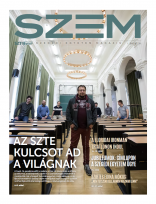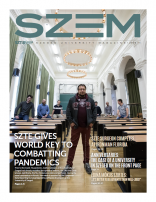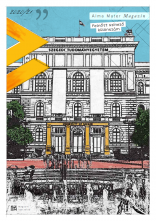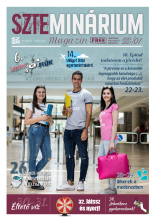
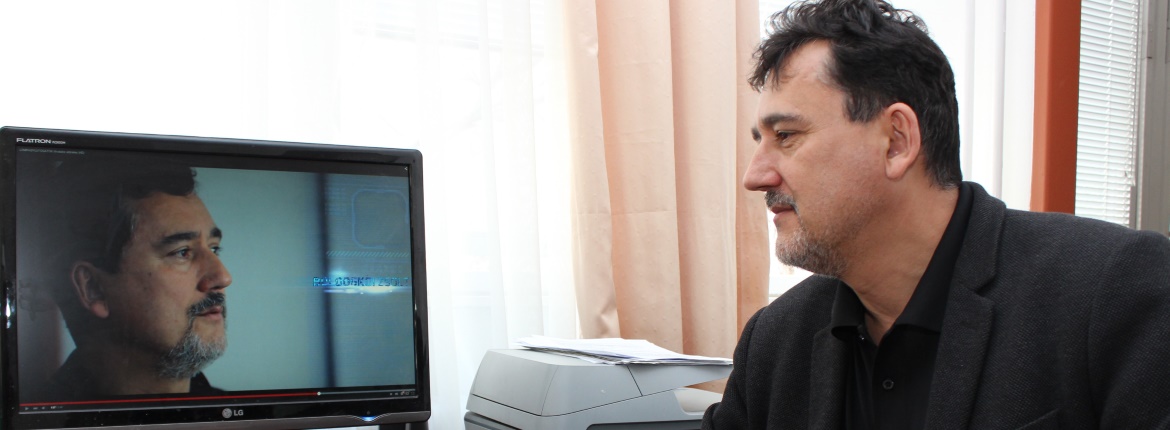
A missionary who propagates science
He is both loved and hated: both the scientific and science-popularizing lectures and articles of molecular biologist Zsolt Boldogkői are immensely influential. A Google search for his name leads to 7600 hits. He has over 4600 friends on Facebook, but his appearances in the media have also provoked highly critical comments and letters threatening him with legal action.
- It is unusual for a university professor to write articles for the most popular online magazines in order to propagate science and to unmask pseudoscience. Why does Zsolt Boldogkői nevertheless commit himself to such a task?
- One of my missions is to popularize biological knowledge - claims Zsolt Boldogkői, head of the Department of Medical Biology at the University of Szeged. In his opinion a feature very characteristic of human society is irrationality. Through his articles and appearances in the mass media, he aims to popularize rational thinking. His hard-hitting criticism of homeopathy has resulted in great dispute.
“Alternative medicine has no reason to exist, and neither does ‘alternative’ natural science,” he told hvg.hu. In his answers to our questions, he made his position quite clear: to unmask charlatanism, frequently disguised behind a facade of pseudoscientific explanations, researchers have the task of restoring the honour of medical science, expressing themselves in plain language and style.
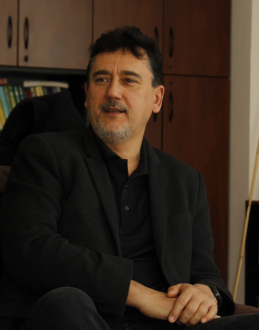 “The illusion of a free mind”. This was the title of Zsolt Boldogkői’s first famous article in Interpress Magazin. The text in which he sought an answer to the question Why are we unfaithful?, published in the Science section of Index.hu attracted a huge audience. His choice of popular, provocative topics and his use of straightforward, readily-understandable logic have led to the Szeged-based professor becoming one of the best-known science-popularizing personalities, with more than two hundred publications and numerous public appearances in the last two years.
“The illusion of a free mind”. This was the title of Zsolt Boldogkői’s first famous article in Interpress Magazin. The text in which he sought an answer to the question Why are we unfaithful?, published in the Science section of Index.hu attracted a huge audience. His choice of popular, provocative topics and his use of straightforward, readily-understandable logic have led to the Szeged-based professor becoming one of the best-known science-popularizing personalities, with more than two hundred publications and numerous public appearances in the last two years.
- I value publications which are read by many people. Therefore, besides my scientific research articles in journals known only to the professionals, I have recently been publishing in popular online magazines - states the professor, who certainly has the widest readership among scientists at the University of Szeged. He believes that, from the aspect of the development of science, these publications are more influential than an article published in the most prestigious professional journal, which may be cited in their own arcticles by, say, a total of 8 other scientists.
- I am interested in the world - he answered when we asked what inspires his work. - I started my career as an ecologist, I now deal with molecular genetics, but I am also interested in physics. I incorporate different fields of knowledge in the courses I teach. Modern science is characterized by interdisciplinarity.
A scientist in a new role
The professor also appears in television debates, for instance on areas of pseudoscience such as acupuncture. The “cultural sci-fi” film Lamplighters (Lámpagyújtogatók), premiered in April 2015, was marketed with his face. His science-popularizing novel San Diego – 2032 can be read on an open blog and in Gépnarancs, and will shortly be available in print and in e-book format. The autumn of 2015 will see the publication of his new book Hyenas around the sickbed and the dining-table (Hiénák a betegágy és az ebédlőasztal körül). He sees a potential for the popularization of science in community media. If justified, he comments on photos of well-known personalities: One of the most harmful things is false preaching by people regarded authentic”.
Together with his colleagues at the Department of Medical Biology Professor Boldogkői teaches cell biology and molecular genetics, with elective courses on molecular biology, developmental genetics, medical molecular biology and genomics. The most popular course is one that is open to students outside the Faculty of Medicine and available on YouTube: “On the borders of science”.
Ilona Újszászi
Photo: Gábor Ócsai




